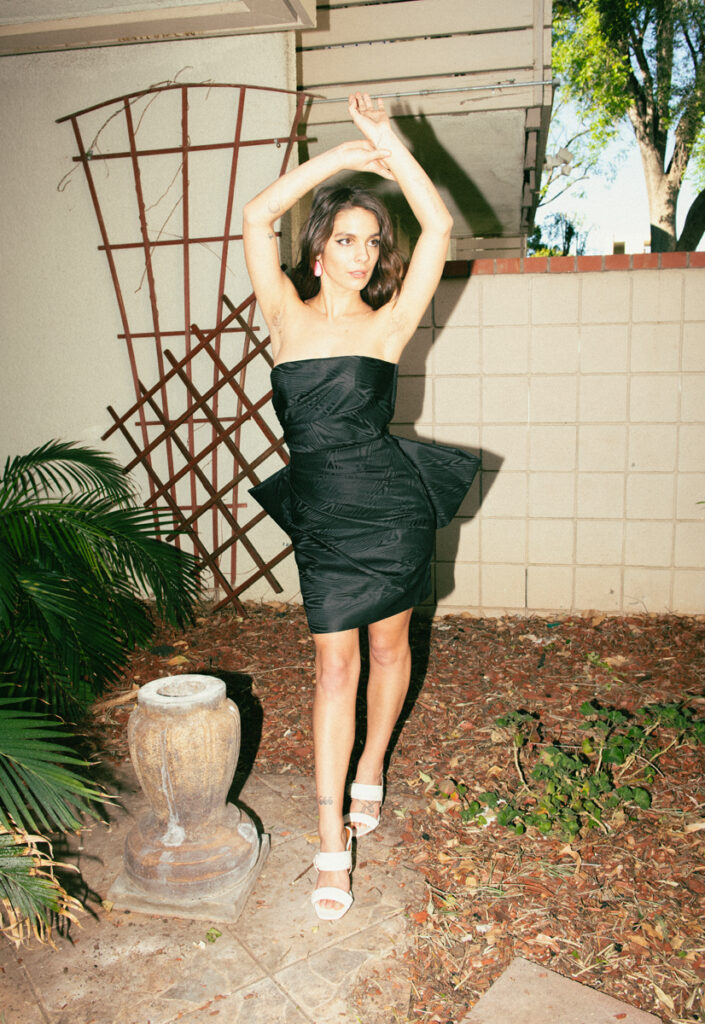
Caitlin Stasey
STARS IN EPIX SERIES
BRIDGE AND TUNNEL
Photography:
ALLEGRA MESSINA
Creative Director:
DEBORAH FERGUSON
Caitlin Stasey, Australian actress, takes us out of COVID-19 and on a trip to 1980s New York with her new role as Jill in “Bridge and Tunnel.” Stasey demonstrates her dynamic acting abilities in this EPIX series, which she describes as a “TV shot like a film,” bringing intimacy to the series format. Stasey talks about the steps she took to be able to get into the role, and why it is important to have female leads like Jill in television.

Dress: Solace London, Earrings: Eshvi @ Tata-LA, Heels: Kurt Geiger
Interview by ALLIE KING
You are originally from Australia, which is where you began your career as an actress with roles in The Sleepover Club, Neighbours, and Tomorrow, When the War Began. Can you tell me about your decision to leave Australia and make the move to LA? What inspired or motivated you to make that jump?
Los Angeles is where almost everything I’ve ever watched comes from. It’s where you have to go if you want to work in film and TV. Australia’s industry is an impressive but tiny one, and the volume of work created there in one year is equal to that of a few months or less here.
In your career as an actress, you have gone back and forth between film and television seemingly effortlessly. What are the challenges that come with each and how do they differ? Do you have a preference?
I prefer film because it’s a lot more intimate. It’s usually just you, your director and your cast making decisions together. TV requires a lot more input from a lot more voices. Even getting cast in a TV show means about a dozen or more people have to approve you. Film is more collaborative by nature — at least independent films are. They’re usually passion projects for the people making them and they’re really looking to you to make their dreams come true. That’s why Bridge and Tunnel was such a special and singular experience. It’s a TV show that was shot like a film. It even looks like a film.

Dress: Iceberg

Dress: Jonathan Simkhai, Earrings: Jude Benhalim @ TATA-LA, Heels: Kurt Geiger
You filmed Bridge and Tunnel, the 6 part mini-series, last fall. It began airing this January on EPIX. When did you first get involved in the project and what did it take mentally and physically to create this in this short turnaround, especially considering the obstacles that stem from the pandemic.
It was tough. COVID-19, and the regulations in place because of it, just made everyone’s jobs a lot harder. They’re totally essential and thank God we have them, but they definitely drain a lot of fun and spontaneity out of the process. It’s also just fucking surreal that we all are living in a pandemic! There is a worldwide virus going on and we’re making a TV show. It would just spin me out some days.
‘Ed is so cool and simply put, we all really like him. He makes everyone feel like they’re a part of a team. You want to work hard for him and give him the show he’s dying to make because he cares so deeply. He’s not precious or delicate about the material and is always looking for our input. We had a cast hangout on zoom recently and he asked us all what we wanted for our characters season 2, and I know he was really listening to us. Nothing is lip service with Ed. He says what he means and means what he says. It’s so rare in this industry.’
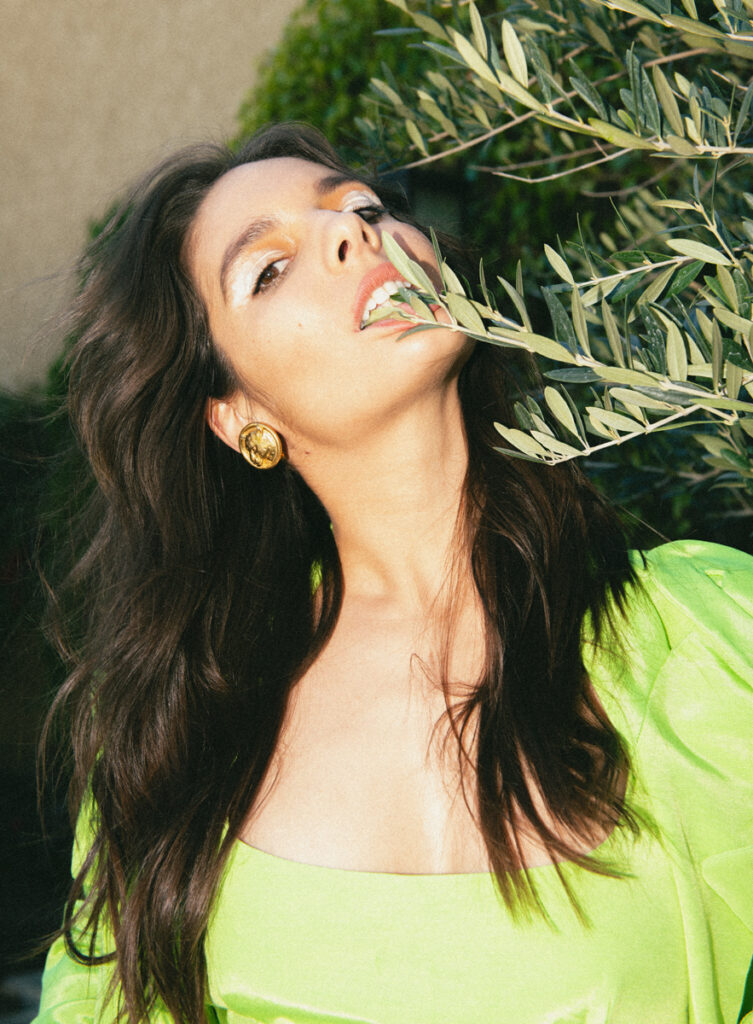
Earrings: Romy Collection at TATA-LA
This is not your first project working with Ed Burns. You also worked with him on the film Summertime. Can you talk about your relationship with him and what it is like to work with him?
Ed is so cool and simply put, we all really like him. He makes everyone feel like they’re a part of a team. You want to work hard for him and give him the show he’s dying to make because he cares so deeply. He’s not precious or delicate about the material and is always looking for our input. We had a cast hangout on zoom recently and he asked us all what we wanted for our characters season 2, and I know he was really listening to us. Nothing is lip service with Ed. He says what he means and means what he says. It’s so rare in this industry.
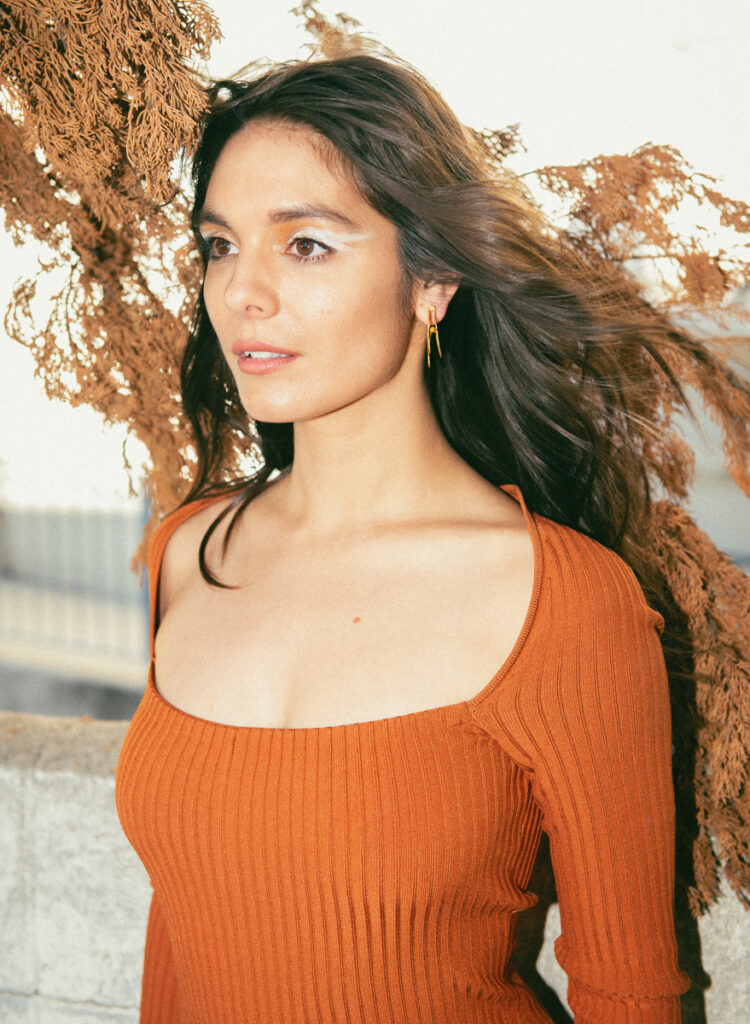
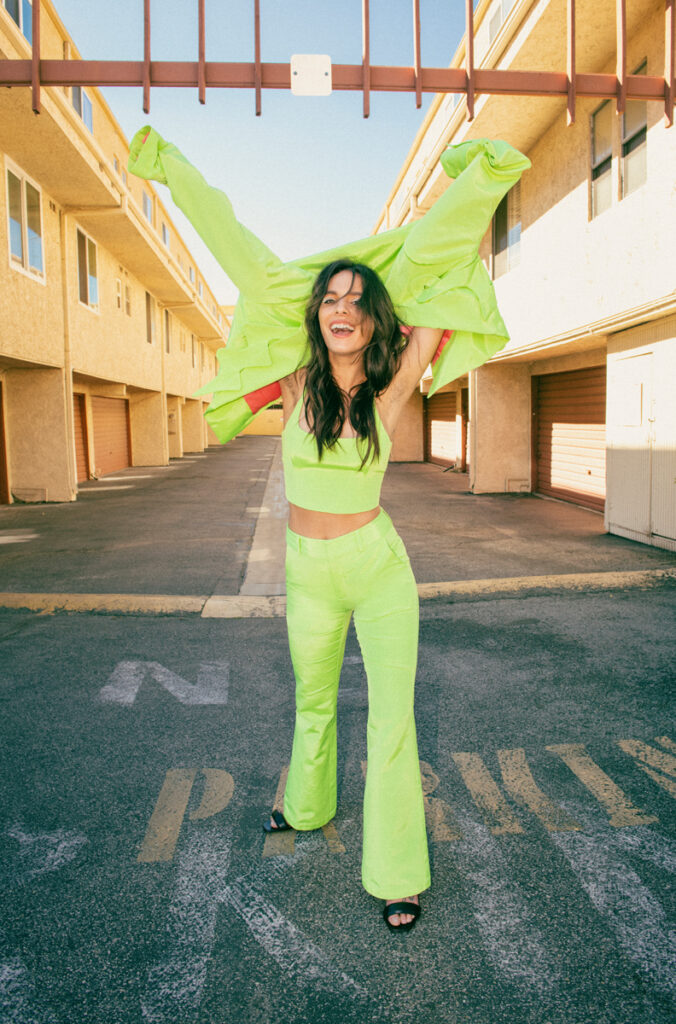
Earrings: Jude Benhalim at TATA-LA, Dress: Jonathan Simkhai
Your character, Jill, has landed her dream job in Manhattan and finds herself rekindling an old relationship. This relationship, between two ideologically different partners, could cause the downfall of their career plans. However, Jill is determined to not let that happen. What aspects of Jill’s character were the most important for you to portray?
I honestly just wanted to turn her into someone I would love to hang out with. She’s so easy to love but she’s firm. She’s honest and forthright, but very tender and has a big heart. Unfortunately in film and TV, we often automatically dislike any woman telling the lead guy “No.” Although Ed intended for Jill to be the heroin and inherently understandable, it’s a bigger cultural problem all women on-screen face. If you defy the nice guy, you’re a monster. While I think it’s absurd bullshit, it really mattered that it didn’t come across that way. To achieve that, Jill has to be her own singular entity and you have to want for her to be happy and fulfilled.

Dress: Iceberg, Heels: Kurt Geiger
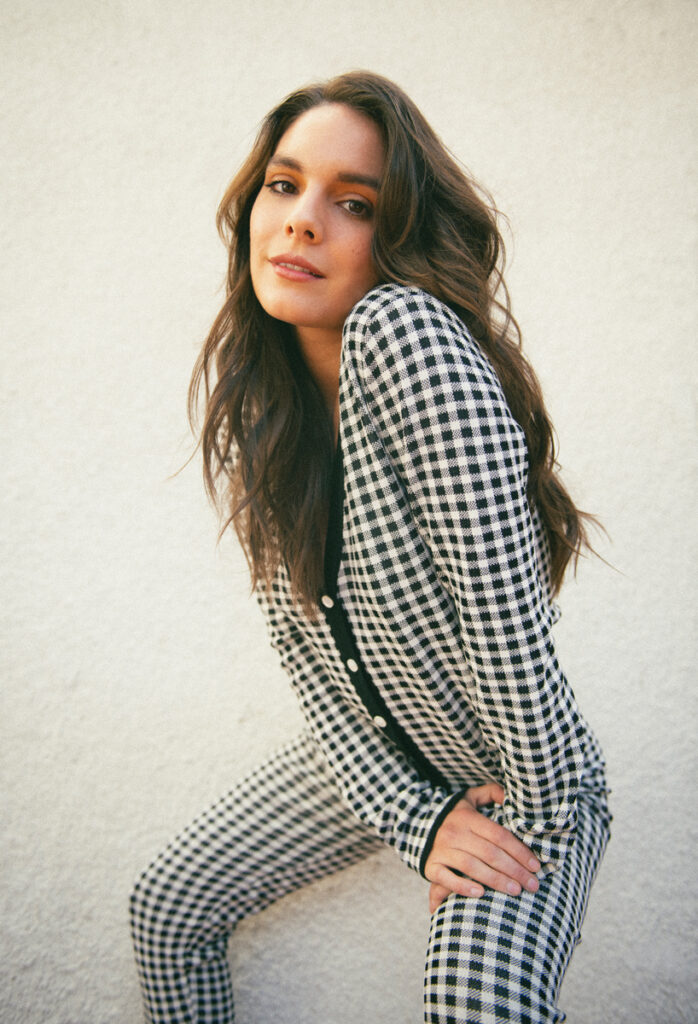
Top and Leggings: Brock
You have mentioned that you relate to your character and the position that she is in. What advice would give to anyone in similar positions?
Keep going. Pull a Jill and demand better. Maybe don’t tell your boss to go fuck themselves, but keep going even when the going gets tough! As my dad always says: “If you’re going through hell, keep going.”
Bridge and Tunnel takes place in 1980s New York. In all your work how have you prepared to act in these different settings? What preparation was done to get into the role of Jill?
I talked in a Long Island accent for the five weeks we were there, which meant I had to improvise in that accent all day. It helped me make the accent a feature of Jill’s rather than the main event. Often with big accents, you can lose sight of who you’re trying to be. How you speak is an unconscious choice. I don’t think about how to sound like myself every day and neither does Jill. I fought in Jill’s voice. I cried in it. And I sang along to dumb songs in it.

‘I talked in a Long Island accent for the five weeks
we were there, which meant I had to improvise
in that accent all day. It helped me make the accent a
feature of Jill’s rather than the main event.
Often with BIG accents you can lose sight of who you’re
trying to be. How you speak is an unconscious choice.
I don’t think about how to sound like myself every day
and neither does Jill. I fought in Jill’s voice,
I cried in it and I sang along to dumb songs in it.’
What is the biggest challenge for you when getting settled into a new role in such distinct settings?
No matter the setting, the challenges for me are often the same. Trusting myself. I’m always afraid to fall flat on my face so I can sometimes really retreat into myself on set. This role needed a big shift in dialect for me and for some reason I just couldn’t trust that I was doing it right. I watch it back now and I’m like, “Oh shit, it’s fine!”
You have been a well-spoken member of and advocate for the LGBTQ+ community. Being in the industry a long time, how do you feel about the industry’s progress towards inclusion being made? Is enough being done?
Until there are no straight people in or making anything, then that will be enough! Obviously, I’m kidding. I’m totally prepared to have straight people involved in some capacity, like financing all movies, and TV made by me and the rest of the gays.
I think what I want to see is LGBTQIA representation behind the camera rather than always on the camera. I just think we need to be more skeptical of straight cis men who are now pivoting to inclusiveness as a contingency plan for their own continued success in the industry. I think all people should be able to tell all stories, but I don’t want them half-assed. Just changing a character to gay or Black for the sake of diversity checkpoints. I also want to see more consulting producer credits and paychecks for people from these communities.

You are directing a series of pornographic films for Afterglow. Can you tell me a little bit about Afterglow and your goal for this project?
My goals are both personal and big picture. I want to become a better director and learn how to make things that look beautiful and feel good so that one day I can learn how to make things that are ugly and don’t. You know, real cinema where there is no joy!
Porn is a great place to get your visual bearings. Narrative storytelling is a fun device you can play with, and one I tend to use. But the bulk of your work is centered around how it looks, and therefore how it feels. You only have a tiny window to create a story before it devolves into sexy chaos. It’s been challenging, but fun to practice. I work with an incredible DP, Ava Benjamin Shorr. She’s teaching me so much and you should hire her for your next project. I also want to contribute to this big evolving world of sex-positivity. It’s just time for the conversation around sex to change. It’s time for a lot of things. But this is one issue I feel very connected to and don’t feel out of place being an ambassador — of many — for. Luckily, Allie Oops, our head of production at Afterglow, is such an invaluable and compassionate resource — a true encyclopedia of all things sex and gender theory and you should hire her for your next project.
What is next for you?
Feature directing. I can’t wait to finish writing and eventually direct my first feature. By the end of this year, I would like to have a plan for shooting it. Beyond that, I hope I can just keep acting and one day have an apocalypse baby with my girlfriend.
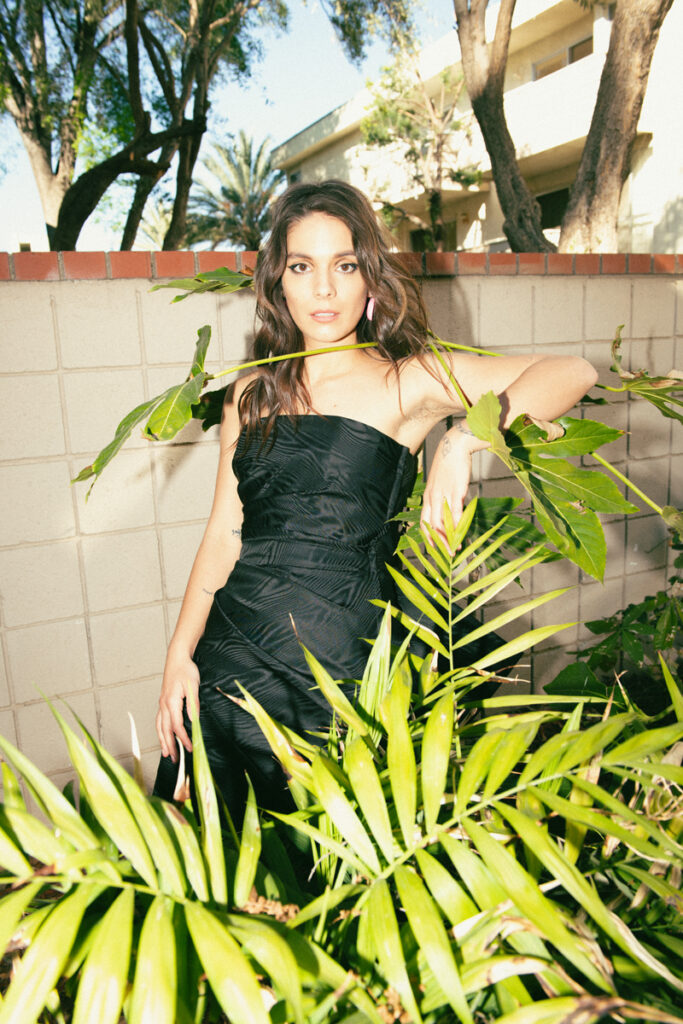
Photography
ALLEGRA MESSINA
Creative Direction & Fashion Editor
DEBORAH FERGUSON
Interview
ALLIE KING
Makeup
ALLAN AVENDANO @A-FRAME AGENCY
Hair
RYAN RICHMAN @A-FRAME AGENCY
Web Layout
TORI SMITH
View the “Bridge and Tunnel” Trailer here:

